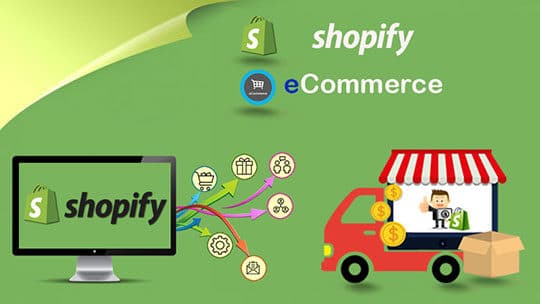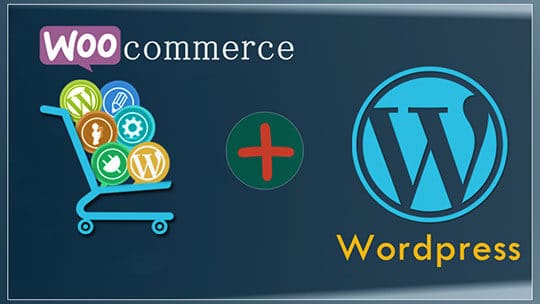Running an eCommerce store is challenging! Technology trends and indicators like the type of devices used to shop, the preferred mode of payment, customer service, etc. evolve every quarter. Entrepreneurs need to be proactive in adopting and implementing industry best practices that deliver value to customers.
Pedro Pandolpho, owner of online health food business Pronto Light shares that, when they started their online store eight years ago, their first website had drag and drop feature that enabled users to pick and drop products directly into the cart. It was a good shopping experience for customers, but they started facing the problem as usage of Smartphones and Tablets increased. This technology didn’t work on those devices and pushing them to create a new website quickly to serve demand coming in from these digital devices.
Internet Retailer, published their first “Quintessential Guide to eCommerce Platforms,” this month. The report stated that 72% online retailers plan to switch their eCommerce platform within the next two years and 17% are already in the midst of this process.
This market is expected to generate $2.1 billion in value as predicted by Forrester Research Inc. for eCommerce platform and technology providers by 2019.
Internet Retailer points towards online retailers outgrowing their current system and their preference for a Software-as-a-Service (SaaS) based solution as fundamental drivers of this trend.
The report showed 40% of retailers moving towards a SaaS-based solution because of faster updates and less dependability on technical staff that is required to manage and maintain such a platform.
The top 4 challenges that e-tailers face in 2017 are:
- Engaging audience throughout customer journey: Micro-Moment Marketing.
- The rise of mobile and social commerce.
- Increasing brand relevance with individual level personalization of shopping experience.
- Securing eCommerce store from Cyber-Attacks.
To help you out with it, here is a comprehensive review of top 3 eCommerce development platforms:
1. Shopify:

In 2004 Tobias Lütke, Daniel Weinand, and Scott Lake started an online store selling Snowboards from Ottawa, Canada. They named their store SnowDevil but after facing issues with eCommerce development platforms options present then, Tobias, a computer programmer by profession, decided to build his own!
Now, SnowDevil.ca acts as Shopify’s demo online store.
Build using Ruby on Rails open source development platform, the founders of SnowDevil re-launched their solution as Shopify in 2006.
Named as Ottawa’s fastest growing company in 2010 by the Ottawa Business Journal, Shopify builds eCommerce development solutions keeping e-tailers convenience and usability in mind.
Companies like Google, Tesla and Wikipedia trust Shopify and it powers 325000+ online stores globally. Said to have helped e-tailers generate $ 24 Billion in revenue, it is a reliable solution to build your store’s digital identity.
Pros:
- Top 10 reviews recognized Shopify as the easiest to use eCommerce development platform, especially for online retailers who are building their first eCommerce
- Package Solution: If you are looking for a free solution then Shopify is not for pre-set optimizations that make setting up a new store effortless.
- Shopify helps integrate your physical and online store effectively, using their Point of Sale system.
- Ease of Scaling: There is no limit on the number of products you can publish, except on Shopify Lite, which allows up to 25 products. You also have an option to upgrade to Shopify Plus. It’s their enterprise level solution for stores with high volumes.
- Developer support required to set-up and run a store on the platform is limited; making it the best choice for beginners in the field.
Cons:
- Limitations of features in Base plans.
- 0-2% transaction charge if you are using Shopify’s payment processing service.
- Being closed-source software, it has its limitations to possible customizations.
Recommended reading: Shopify Review – All You Need To Know.
2. Magento:

With the help of some volunteers, Varian Inc. published the first release of the platform on March 31st, 2008. In June 2011, Magento was acquired by eBay.
AheadWorks in 2016 estimated 29.1% market share for Magento, making it the most dominant player in the industry.
The development platform offers unmatched flexibility when compared to its rivals. Magento is open-source software that enables a high level of customization from which e-tailers can take benefit.
It suits the need of small businesses and large enterprise alike but setting up and managing a Magento store requires good developer support.
Pros:
- It is an open-source solution: Merchants can select hosting of their choice depending on their business requirements.
- Magento has English, German and French languages as default and you can have separate stores under a single domain. It is a good choice if your online store has both B2B and B2C functionalities.
- Magento provides effortless integration with many leading ERP and CMS platforms like Oracle, SAP,
- A Large pool of responsive themes and plugins are available, but customization requires technical experts.
Cons:
- In 2015 it was reported that outdated and unpatched were prone to Cross-site scripting In October 2016 4000+ Magento stores were said to be vulnerable to such an attack.
- The free community edition faces speed and other performance issues.
- It takes technical support and time to build a store on this platform.
3. WooCommerce:

Launched on September 27th, 2011, this eCommerce plugin for WordPress became popular quickly due to its free base product, ease of use and customization.
It is said to have powered 17.7% or 381187 sites globally in August 2014.
Thousands of add-ons and many premium WordPress themes offering compatibility with WooCommerce have made it a preferred choice for users who have intermediate knowledge of eCommerce.
Pros:
- Fast Set-up: Set-up takes only a few seconds, and UI is friendly and graphic making product management effortless.
- Both WordPress and WooCommerce are free to download hence making it a preferred choice for seasonal online retailers.
- SEO friendliness of WordPress will help your WooCommerce Store to get on top of SERP (Search Engine Result Page) easily. Availability of many advanced SEO plugins also helps in achieving desired search page results.
- Coupling your online store up with a WordPress blog is a great way to increase traffic.
Cons:
- Cannot use WooCommerce without linking it to WordPress.
- Security and Web-hosting will be online retailer’s responsibility.
- You would have to install plugins and extensions for using advanced features.
This article is written by Harshal Shah, CEO and Founder of Elsner Technologies, a global IT consulting firm with expertise in delivering IT solutions on the Web, Mobile and Cloud. He is a tech evangelist with a reputation to provide optimum solutions for business automation and solving real life problems with the power of IT. You can follow him on Google+.




